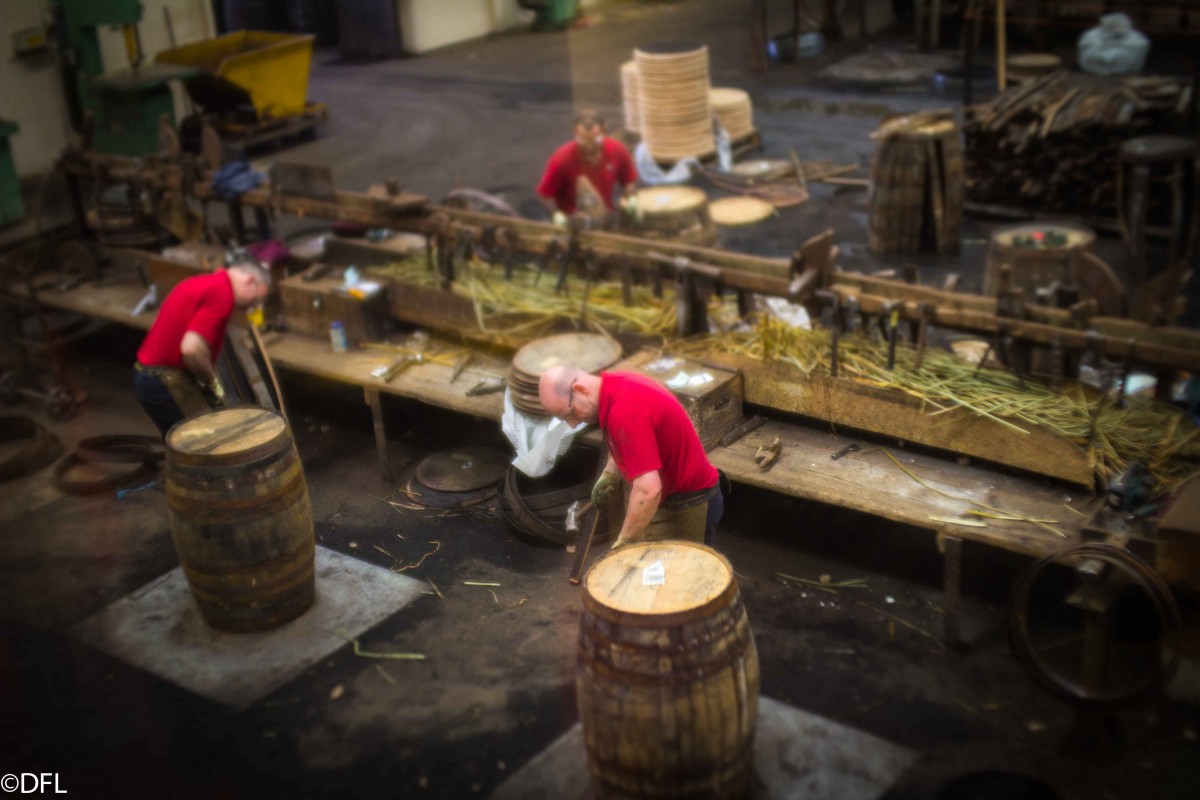
#22
33 WHISKY TERMS YOU SHOULD KNOW
10 Nov 2016 By David Fuhrmann-Lim
For new whisky drinkers it can seem daunting to keep up with whisky terms. So here’s a glossary for you to memorise, and to use as your go-to guide — Sláinte!
34 whisky terms you should know before you head out.
ABV – Alcohol By Volume, or the strength of the drink measured by percentage of alcohol. Sipping the whickeys with higher ABVs will almost certainly result in blackouts and sore heads the next morning.
Angel’s Share – This is one all whiskey enthusiasts should know. Despite sounding like some kind of weird religious whiskey ritual, the Angel’s Share is simply the percentage of liquid that evaporates from barrels each year.
Beer – We all know what beer is, but did you know that whiskey begins life as a simple type of beer? Well now you do!
Blend – Literally what it sounds like, this is a mix of several different malts from several different distilleries. Johnnie Walker and Monkey Shoulder are examples of some pretty fine blends.
Cask Finish – This is when the whiskey is taken from its primary cask and placed in a second or third cask for the purpose of maturing it with more flavor. Like a finishing school for alcohol.
Cask Strength – Whisky that has been bottled at cask strength has a higher ABV than whiskies that are diluted with water before being bottled. So if you’re enjoying a cask-strength dram, just make sure you don’t enjoy it too much!
Charring – This is when the inside of a barrel is fired — using real fire, not what happens when you steal your boss’s sandwich from the fridge. (It was a really good sandwich, in fairness.) This can be done to varying degrees and encourages the liquid to interact more with certain elements in the wood. It is used especially in the production of bourbon, where it results in a sweet vanilla flavour.
Chill Filtration – Chill-filtration is the process of lowering the temperature of whiskey to between -10 and 4 degrees Celsius, then passing it through a fine filter, in order to reduce cloudiness and residue. There are two schools of thought on chill-filtration, one in support of it and the other dead set against it. Kinda like the dark and light side in Star Wars. Choose your side, and choose wisely.
Column Still – As opposed to a pot still, this is, in the most basic of terms, a tall block of kettles set on top of each other that allows the whiskey to condense at different levels. It creates a purer liquid at a higher ABV than pot stills, but is not as commonly used for scotch whisky.
Congeners – These little chemical compounds are responsible for the fantastic flavor of whiskey. They are impurities that form during fermentation. But they’re the good kind of impurities, the kind we can all get behind and enjoy.

Cooperage – The place where barrels are made. The person who makes them is called a cooper.
Distillation – This is what occurs in column and pot stills. It is the process of heating liquid until the alcohol evaporates and condenses. Alcohol evaporates at a lower temperature than water, so this is a process of separating the two. A kind of liquid divorce.
Dram – A name used to refer to a measure of whiskey, about the same as a shot. If you’re having a wee dram, you’re probably in Scotland and enjoying some pretty fine scotch whisky.
Ethanol – The glorious stuff, the type of alcohol that we drink. Where would we be without it? (Probably able to remember a lot more than with it, really.)
Expression – A fancy way of saying one of many types of whiskey from the same brand. The different types, finishes, or ages of whiskey produced by a brand are known as its expressions; the whole product family is the range.
Feints – Not what happens when you have too much of the good stuff, this is the stuff at the end of the distillation process that not even the hardiest of drinkers would be able to stomach.
Floor Maltings – Traditional buildings where barley was malted. Basically a giant hall to lay soaked grains in. Thrilling really!
Grist – The product of finely grinding malted barley, this stuff is used in the mashing process.
Low Wines – This is stuff that is produced during the first part of distillation in a wash still.
Malt – The stuff that makes grist! If you don’t know what grist is, you need to go back and pay better attention to this list. Malt is barley that has been fermented so partial germination occurs. (Bonus points for knowing where this occurs. Hint hint, it’s above grist.)
Mash Tun – The tub where the grist is mixed with water to dissolve its fermentable sugars.
Master Blender – The person who distilleries entrust with the most precious of arts, the art of mixing whiskies to make a more superior whiskey.
Maturation – When a whiskey is placed in barrels and left to soak up the flavors of said barrel. Please note whiskey matures at a younger age than most human males.
New Make Spirit – This is whiskey before it has matured, when it is still fresh and naïve, yet to be corrupted by the evils of the barrel-aged world.

Oak – The wood that pretty much all barrels are made out of. In fact it’s illegal for Scotch whisky to be matured in anything other than oak. (If you did that you’d have to call it something else like Steve or Mike.)
Peat – We all love a bit of peat. Unless it’s Pete, who I lived with at university. But otherwise we all love Peat! Peat is what forms when lots of plants die and get squished together with lots of water.
Peated – This is when peat (see above) is used to dry malted grains. It passes on some of its flavor and you can taste it in the resulting scotch. Mmmmm decayed plants!
Pot Still – A giant kettle where the divorce of liquids occurs (see Distillation). This is the most common form of distilling in Scotland.
Regions – Someone decided to split Scotland up so we could better identify all the different flavor profiles of Scotch. This resulted in several different regions that all fight to be crowned King of Regions, Kind of like “Game of Thrones” but with more drinking (and therefore better). Macallan (below), for instance, is in the Speyside region – gorgeous, innit?

Sláinte – Cheers. Sláinte is the basic form in Irish Gaelic. Variations of this toast include sláinte mhaith “good health” in Irish (mhaith being the lenited form of maith “good”). Here’s how to pronounce it.
Small Batch – As opposed to Big Batch (note: not a real term), this is when whiskey is produced on a smaller scale than normal. This should probably be whispered to get the full effect of just how small “small batch” is.
Whisky versus Whiskey – Ahh, the “e”. This is the letter that has divided nations for centuries. Not really. If you’re in Scotland, Canada or Japan, don’t use the “e” to spell whisky. If you’re in America or Ireland, then do use the E. A handy way to remember this: If there’s an “e” in the country name, there is an “e” in its whisk(e)y.
Worm Tub – This is much lovelier than it sounds. It is not a tub full of worms, as I genuinely believed when I first heard it. It is in fact a tub with a long pipe snaking through it like a worm. This is where alcohol vapors are condensed.
Wort – Again, nicer than it sounds, this is the liquid that comes out of the mash tun that is full of sugars, just waiting to be fermented.
This first appeared on Great Drams
Like this? From A to Z, 26 terms about alcohol

You might be interested in...
DRINK THIS: 2024 TSUKURIWAKE SERIES
The Combo of Suntory’s Tsukuriwake Series 2024 and Takayama’s Elevated Omakase is a Pairing Made in an Aesthete’s Heaven.
GRAIN & GRAPE
Auchentoshan Breaks New Terroir With Their Limited Edition Sauvignon Blanc-finished Expression
DRINK THIS: GLEN GRANT 60 YEAR OLD
Worth the Wait.
DRINK THIS: 2024 TSUKURIWAKE SERIES
GRAIN & GRAPE
DRINK THIS: GLEN GRANT 60 YEAR OLD